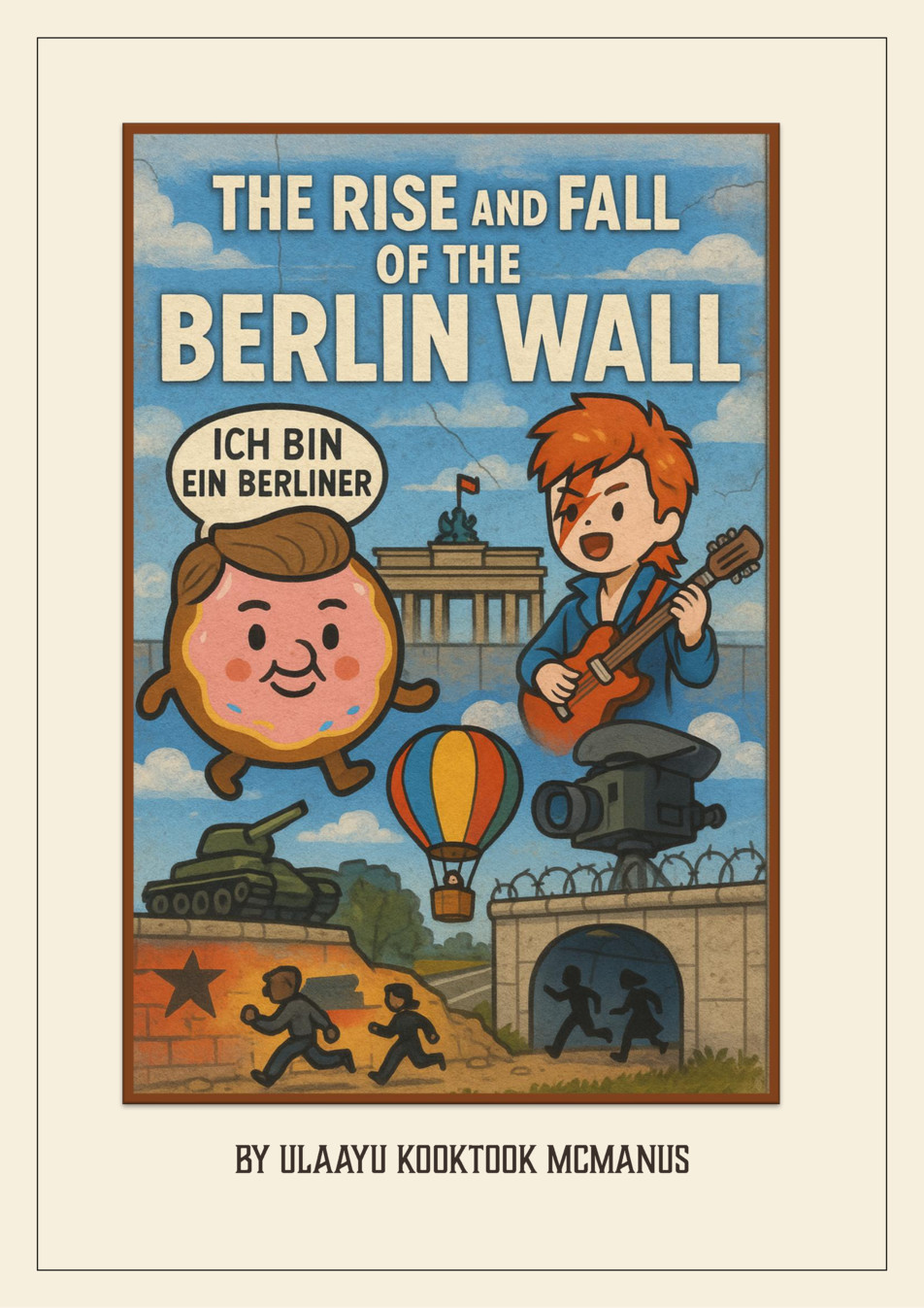The Rise and Fall of the Berlin Wall
The Rise and Fall of the Berlin Wall
The Rise and Fall of the Berlin Wall
Chapter One - The Rise of the Berlin Wall
Imagine waking up to finding a giant wall in the middle of your city separating you from your friends and family. The Berlin Wall was built to stop East Berliners from escaping to West Berlin. After World War Two ended in 1945, Germany was split into four zones, with the Soviet Union being communist and the other Allied Powers being democratic. The division led to tensions, culminating in the construction of the Berlin Wall. The wall changed daily life for families, separating loved ones and reshaping the city.
(Source: Page 3-7)
Chapter Two - Freedom in the East and West
The East and West Berlin were starkly different in terms of political ideologies. While the West promoted freedom with democratic values such as freedom of speech and travel, the East was controlled by a communist regime. The Berlin Wall symbolized the divide between these two worlds, impacting the lives of those on both sides. The construction of the wall was a result of increasing tensions and a plan by East German and Soviet leaders to prevent further escapes to the West.
(Source: Page 9-18)
Chapter Three - Escaping from East Germany
As restrictions tightened in East Germany, many sought ways to escape to the West in search of freedom and better opportunities. The stories of early escapes and creative methods used by individuals to flee East Germany highlight the desperation and determination of those living under communist rule. The Berlin Wall stood as a physical and ideological barrier, but it could not contain the human spirit yearning for liberty.
(Source: Page 20-23)

